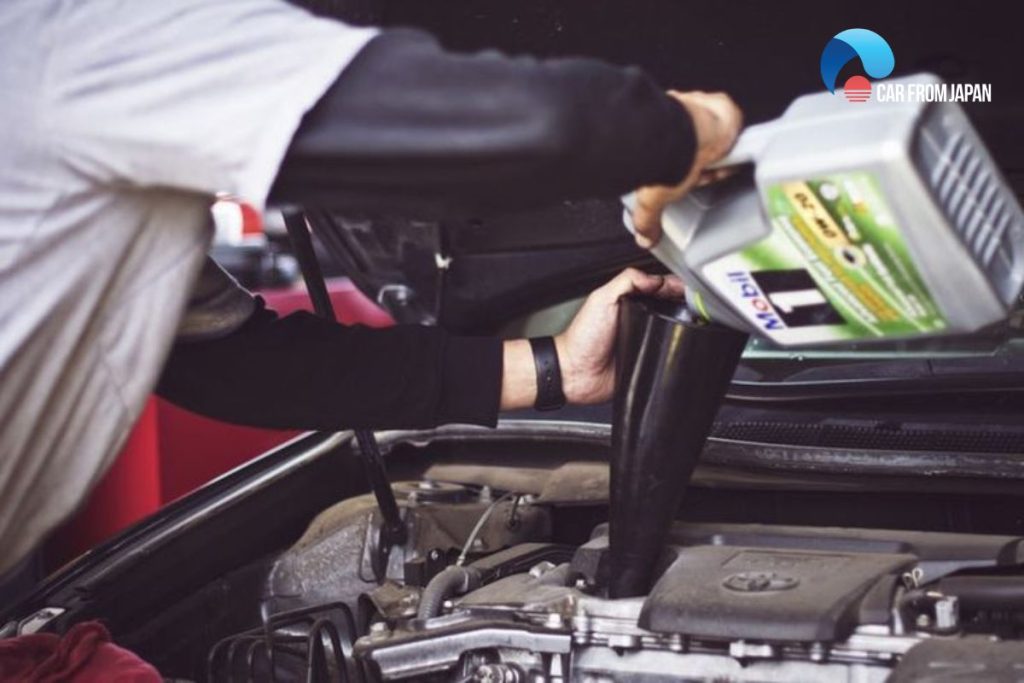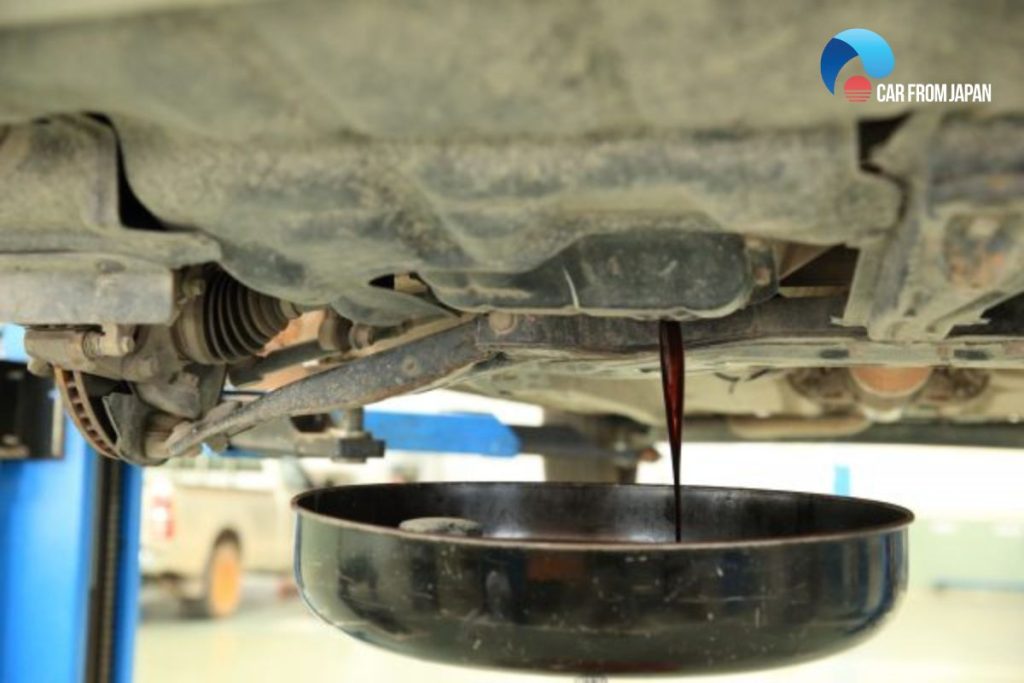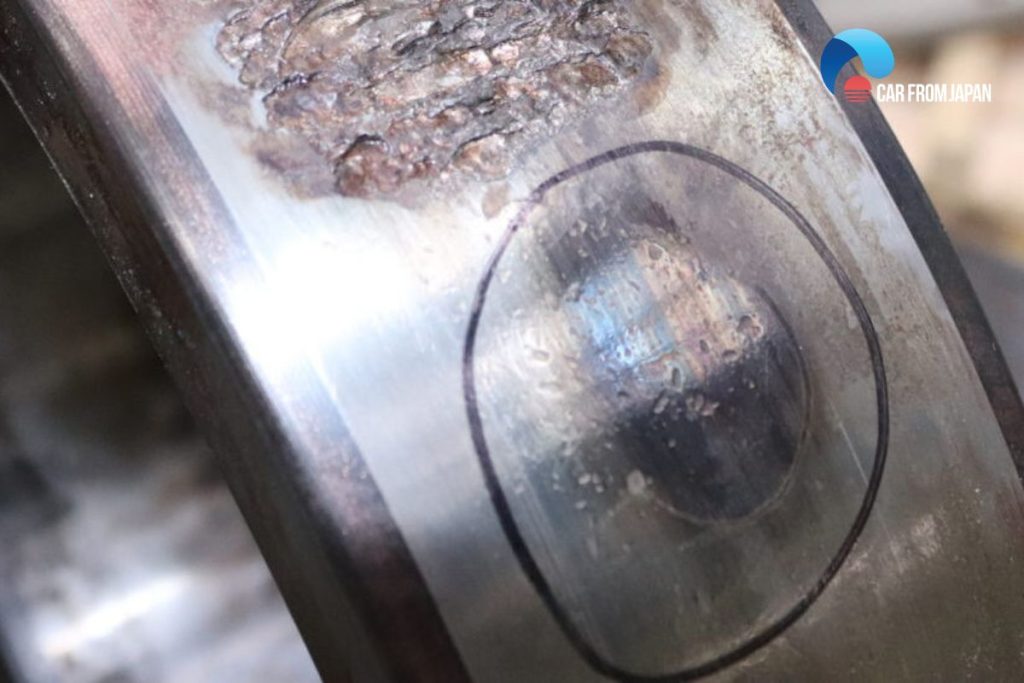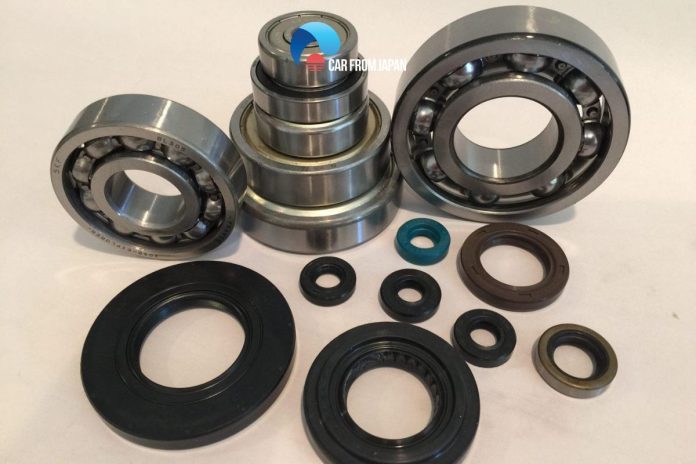If you do not detect the engine bearing failure symptoms soon, you will have to pay a lot to fix or even replace your engine with a new one.
The best way to prevent these issues is to detect and repair them as soon as possible!
Contents
- 5 Common Engine Bearing Failure Symptoms
- What Causes Engine Bearings To Go Bad?
- Related FAQs For Engine Bearing Failure
- How much does it cost to replace engine bearings?
- What are the symptoms of a bad oil pump?
- Can an oil pressure gauge help detect early engine bearing failure?
- Can driving with a failing engine bearing cause the crankshaft to break?
- Is there a temporary fix for bad engine bearings?
- How long can I drive with worn engine bearings before complete failure?
- Final Words
5 Common Engine Bearing Failure Symptoms
When your car has a worn-out engine bearing or rod bearing, it will indicate some of the common symptoms below.
Noise in the engine
One symptom of engine bearing failure are engine noises. While many drivers are familiar with the telltale “rod knock”, a rhythmic hammering sound that intensifies with engine speed, other noises can also point to worn bearings.
Rod knock occurs when excessive clearance due to bearing wear allows the connecting rods to strike the crankshaft with each piston stroke.
Additionally, there is other engine noise that can demonstrate worn-out engine bearings, and that can occur in the lifters and valvetrain.
Excess oil leakage at the rods and crank famish the valvetrain of the required pressure, leading to a seemingly innocuous lifter tap that actually shows worn rod or crank bearings.

Loss of oil pressure
Loss of oil pressure is also one of engine bearing failure symptoms you need to be aware.
Typically, the oil pump flows a fixed amount of fluid (which is 20 gallons per minute). If there are some little leaks in your engine such as leaks in the gap between your engine bearings, the rocker, or the hydraulic lifter, your engine will lose oil pressure.
Hence, excess clearances between the bearings as a consequence of excess bearing wear will lead to loss of oil pressure, especially at low RPM when the pump is spinning at the slowest speed.
Transmission noise and worn belts
Worn belts and transmission noise are other signs of worn engine bearings brake down. The main bearings have 2 types of bearing faces: the surface which the crankshaft works on, and a thrust face to keep the transmission from going back and forth.
The thrust-bearing face can wear like the main surface. If there is enough space on the rod journals, worn-out thrust bearings can enable the crank backward enough to jam the torque converter into the transmission or move forward or backward enough to result in excessive edge-wear on the belts.
The first one may result in transmission noise or damage. The metal dirt as a result of the force of the torque converter pushing back on the oil pump can be stuck in the filter, leading to fluid pressure loss and then breaking the pump.
Silver shavings in the oil
The next one on the list of engine main bearing failure symptoms is the appearance of silver shavings in the oil. Normal bearing wear produces a probable amount of aluminum dust with a silver color in the oil.
So when you check the oil level, you can see something like a metal sheen on the dipstick. But this dust should be just that, no more, a powder that can not form into any distinct aluminum grain.
But when engine bearings suffer from oil lack or overheating, they will shave away and form into fine ribbons or splinters.
So when you check the oil level or change oil, if you see ribbons or splinters of aluminum in the oil or stuck to your dipstick, chances are you’ve got either a worn-out bearing or a broken one.

Copper sheen in the oil
Last but not least is copper sheen in the oil. Many bearings are designed with 03 layers: a steel backing plate, a layer of copper in the middle, and a soft aluminum outer layer.
As copper is softer but slicker than aluminum, it is used in these bearings to give the owner a last line of protection before the bearing gets down to the steel layer or totally brakes.
The lifespan of the copper layer is about 1000 miles or 2000 miles, giving you a chance to find out coming bearing problems before they damage your motor.
When the bearing wears down to the copper layer, it will warn you by sending out a red flag in the form of copper dirt in the oil.
So if you detect any copper sheen in the oil inside the valve cover or on your dipstick, it means your bearings are badly broken.
Read More: How Long Can You Drive With a Bad Wheel Bearing?
What Causes Engine Bearings To Go Bad?
The main culprits behind a broken engine bearing are insufficient lubrication, dirt or debris, misassembly, bearing crush, overloading, hot rodding, or forcing excessive loads.
Here’re the details for your reference.
Lack of lubrication
Lack of proper lubrication is the leading cause of engine bearing failure. Engine bearings rely on a constant film of oil to separate them from the rotating crankshaft and connecting rods.
Without sufficient oil, these metal components grind against each other, generating excessive friction and heat.
Several factors can contribute to inadequate lubrication. Perhaps the most obvious is a low oil level. With sufficient oil in the engine, low oil pressure can starve the bearings.
This can result from a failing oil pump, worn engine components that allow oil to bypass the bearings, or a clogged oil filter restricting oil flow. Finally, using the incorrect oil viscosity can also lead to lubrication problems.
Oil that’s too thin won’t maintain adequate pressure, while oil that’s too thick may not flow properly to all critical components.
Contamination
Engine oil contamination significantly accelerates bearing wear. Just like sandpaper, microscopic particles of dirt, metal shavings, or coolant circulating within the oil system act as abrasives, grinding away at the bearing surfaces.
Over time, this constant friction increased noise, vibration, and ultimately, premature bearing failure.
Culprits such as dirty air filters, infrequent oil changes or coolant leaks will not only dilute the oil and reduce its lubricating ability but also create corrosive byproducts that can damage bearings and other engine components.

Excessive load or stress
Subjecting your engine to excessive loads or stress significantly increases the burden and lead to engine bearing failure symptoms.
Towing heavy loads, aggressive driving with rapid acceleration and deceleration, or consistently operating the engine at high RPMs, especially under load, generates increased heat and pressure within the engine.
Over time, this increased stress can fatigue the bearing material, leading to premature failure.
High operating temperatures
High temperatures break down the oil’s molecular structure and reduce its viscosity. The thinner oil is less capable of maintaining the crucial oil film between the bearings and rotating components, leading to friction and wear.
Furthermore, high temperatures can cause the bearing material to soften and deform. To prevent heat buildup within the engine, avoid high-speed driving or heavy loads in hot weather!
Manufacturing defects or Improper installation
While less common than other causes of engine light after oil change, manufacturing defects or improper installation can contribute to bearing failure.
A bearing with a flaw from the factory may wear out much faster than a properly manufactured one.
Similarly, incorrect installation during engine assembly or repair, such as using the wrong size bearings, installing them incorrectly, or failing to lubricate them during installation, can lead to wear and failure.
Age and Wear
Even with diligent maintenance, the constant friction and pressure the bearings endure eventually take their toll. Their lifespan varies depending mostly on driving conditions, engine type, and oil quality.

How much does it cost to replace engine bearings?
The cost to replace engine bearings is up to the extent of your repair. In some cases, your engine may require a new crankshaft, new connecting rods and pistons, timing chains, and camshaft bearings.
If you have to replace all these parts, it is advised to replace the complete engine assembly. The average cost for fixing connecting rods is from $2,500 and more.
What are the symptoms of a bad oil pump?
Here are 5 common symptoms of a bad oil pump:
– Noise in the valve-train
– Unusually noisy hydraulic lifters
– Higher engine operational temperature
– Noisy oil pump
– Decreased oil pressure
Can an oil pressure gauge help detect early engine bearing failure?
Absolutely! One of the first signs of bearing wear is a drop in oil pressure.
If your oil pressure is consistently lower than normal, especially at idle, it could mean the bearings are worn and allowing oil to escape from the lubrication channels.
Can driving with a failing engine bearing cause the crankshaft to break?
Yes! If you continue driving with bad engine bearings, excessive friction and heat can lead to a spun bearing, which may seize the crankshaft.
In extreme cases, the crankshaft can snap, causing catastrophic engine failure.
Is there a temporary fix for bad engine bearings?
There’s no true “fix,” but using a thicker oil or adding an oil stabilizer might reduce knocking noises temporarily.
However, this is not a solution—bearing failure will continue to worsen until a full repair or engine rebuild is performed.
How long can I drive with worn engine bearings before complete failure?
Some bearings may last thousands of miles with minor symptoms, while others may fail within days or even hours if the damage is severe.
Understanding more about the engine bearing failure in this video from AERA!
Final Words
If you have any questions related to engine bearing failure symptoms or bad rod bearing symptoms, feel free to leave them in our comment section, and then we will discuss them further.
Don’t forget to check our maintenance tips updated every day to get more practical knowledge on how to maintain a car!




Considering how important the bearings are to your car’s engine you need to get them checked out as soon as you notice them knocking around. After all, that could be a sign of a much larger problem with the engine. If that is the case then you’d definitely want to get it looked at before the engine fails completely.
I used an Honda accord 2006, I recently replaced the Beerings but now if I turn on the car AC it start vibrating or it goes off. It is that my engine has o power no more.
My friends car has been producing a lot of blue smoke lately. I told her it may be something to worry about, but she doesn’t want to have it looked at. I’m really glad I found this article so I can tell my friend that the oil is beyond the sealing service and could cause damage.
Thank you for pointing out that black smoke indicates that the car needs to be repaired because there are too little air and too much fuel entering the combustion chamber. I have a feeling that if we ignore this problem with the engine system, it’s going to cause us a lot of problems. I will bring the car to the mechanic as soon as possible since the black smoke thing has been happening for more than a week now, and my mom is already complaining.
I appreciate it when you said that although black smoke can be a sign of a problem, most of the time it just indicates that too much fuel and less air is getting in the combustion chamber. Though of course, I cannot rule out that there is a problem with the engine, especially since I have never once brought the car for a check. I will find a mechanic as soon as possible to see if there is something that needs to be fixed.
It got me when you said that if the engine is shutting off frequently, then there is a chance that the components are failing and needs to be looked at. I am sure that the same principle applies to aircraft engines since I noticed that the one we are using is suffering from the same issue. Time like this makes me think that it would’ve been good if we had a mechanic. But anyway, for now, we will hire someone to do that for us.
Hi, my name is Corey! I have loved reading your articles. They are very insightful and helpful. I have seen shiny metal particles on my dipstick and in my oil. My question is will bad engine bearings affect my engine performance and driveability? I have noticed a slight oil pressure loss, and a big loss of performance since noticing the shavings on my oil dipstick! Would this cause horsepower loss as well? Thanks for your help in advance.